Supporters of the Residential Infill Project (RIP) say that it will create more housing “choices”. They like to show pictures of charming 1920s duplexes.
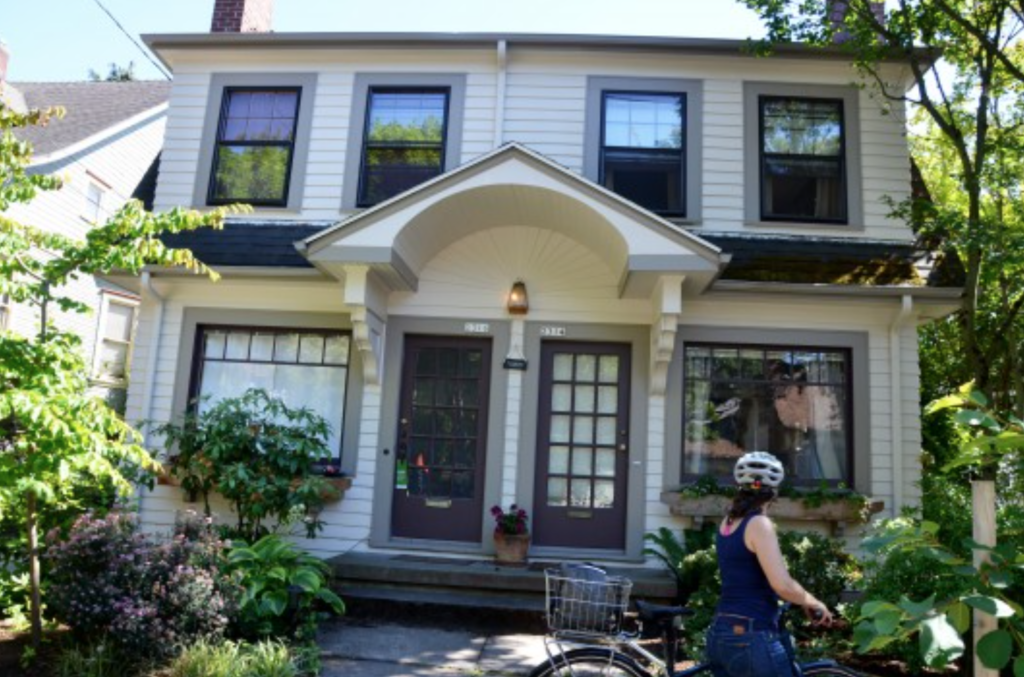
What RIP supporters don’t show is the actual massive, blank-faced, high-priced, box-like infill duplexes and quadplexes that the infill developers pushing for this rezoning are actually building.
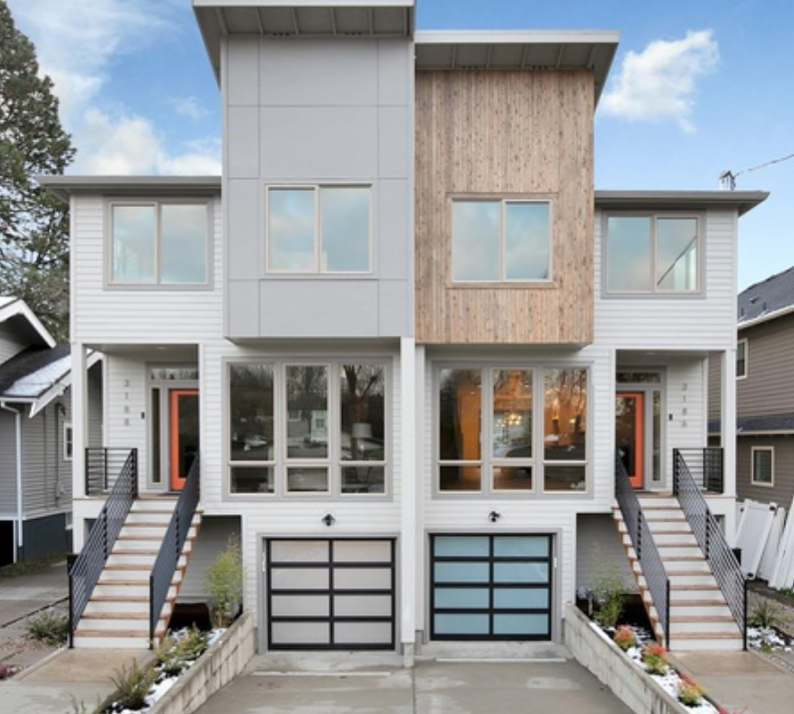
Does it matter what the new infill looks like? How big or tall it is, whether it has yards of grass, concrete, or no yards at all? That all the trees are cut down to squeeze in the biggest box?
Many Portlanders would say “yes, it matters!”
Almost all Portlanders would say there is one thing that matters even more. Along with demolishing older bungalows and cutting down trees, RIP-style infill redevelopment displaces Portland’s most vulnerable families.
New infill is built for the high income. The new duplexes sell for $600,000/unit and more, the new quadplexes sell for $370,000/unit or rent for over $2,000/mo per 1,000 sf unit .
The lower-income family who lived in the small bungalow that used to be there, and was evicted for the redevelopment, will not be living in the new infill housing. That infill was not built for them.
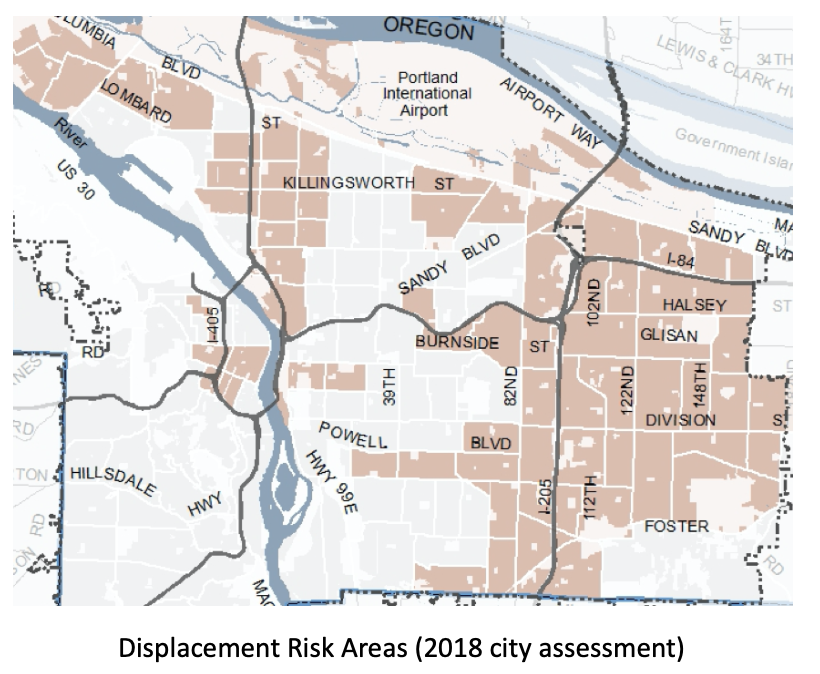
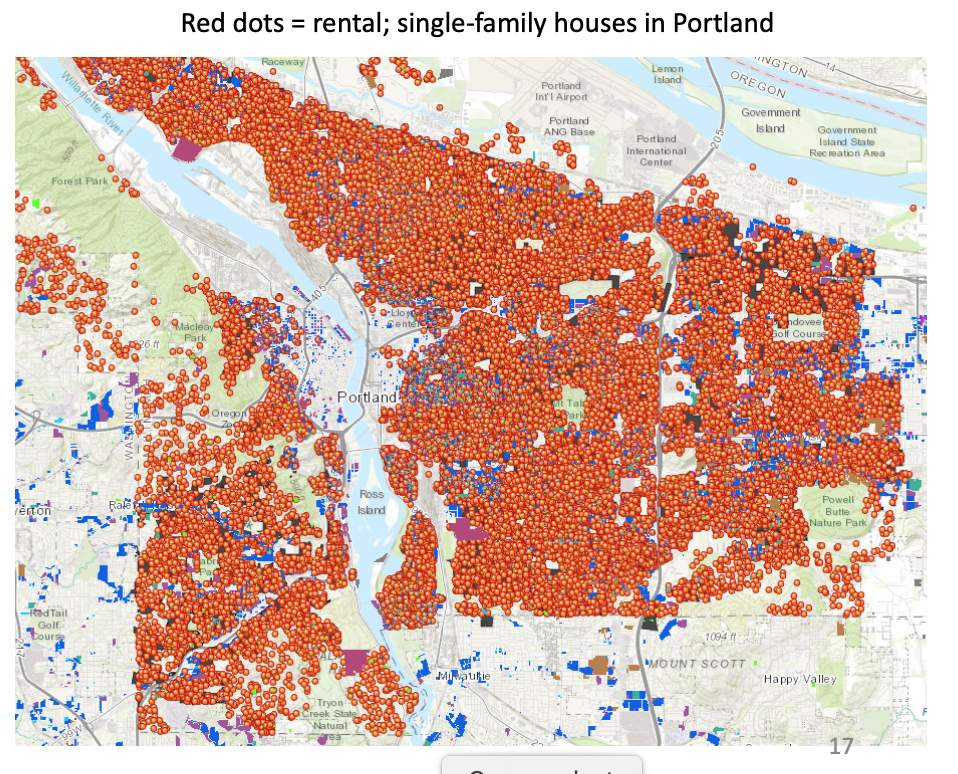
Displacement is why RIP only just squeaked through the Planning & Sustainability Commission (PSC) on a 5-4 vote, with every commissioner of color voting “No”. Commissioner Andre Baugh pulled no punches when he called RIP “institutionalized racism”.
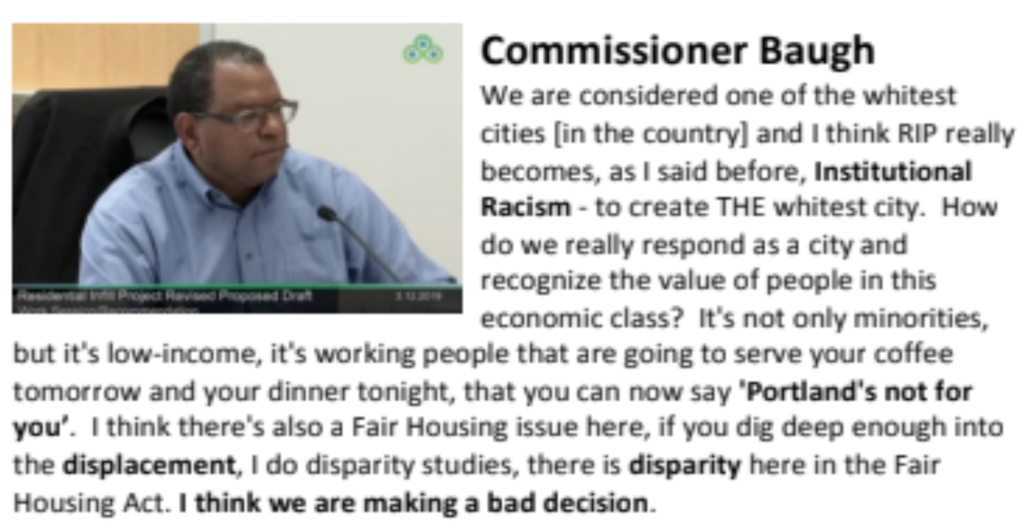
Displacement is why so many Portlanders oppose RIP, even if they themselves are (?) not likely to be directly affected.
Displacement is why at least a couple of Portland’s city commissioners are raising questions about RIP. See these recent articles:
City Commissioner Chloe Eudaly Says She Won’t Vote for An Upcoming Multiple-Unit Building Policy Without Added Tenant Protections
Infill hearings set, vote uncertain
Why is it increasingly clear, even to city council, that RIP will displace Portland’s vulnerable families, lower income residents, and disproportionately communities of color? The facts were laid out in this article from last year My View: Infill project will not benefit ordinary folks.
There are many ways city council could change RIP to prevent, or at least greatly reduce, displacement. Council could
- Require that each new infill duplex, triplex or quadplex contain at least one affordable unit. That has to mean genuinely affordable, for families making below average income. And that has to mean an affordable unit that is the same size and bedrooms as the non-affordable units – no “affordable broom closet” please.
- Prevent the demolition of existing housing that is sound and affordable – focus infill on vacant land, parking lots, and unsound buildings. Or at least impose a very large charge on those demolitions, that can be used to build genuinely affordable housing.
- Complete, approve and implement a real Anti-Displacement Program, one with teeth, before proceeding with RIP.
- Test RIP with a pilot program in two or three neighborhoods, working with the community, to see if the Anti-Displacement Program works.